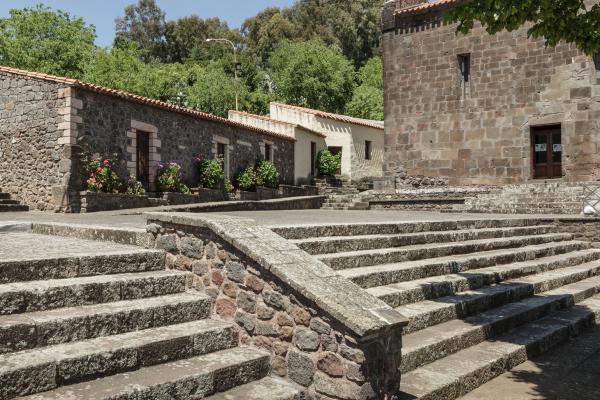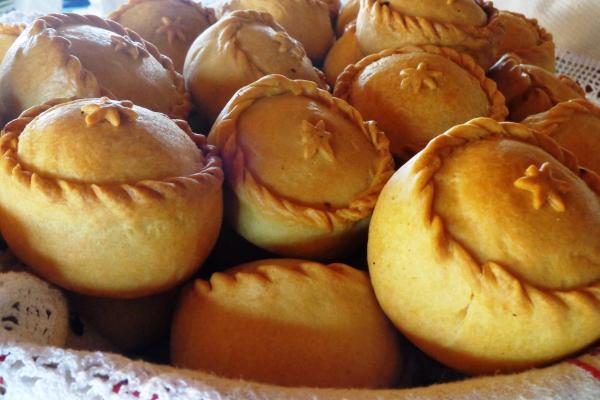A treasure is held on the south-eastern side of the Montiferru, 500 metres above sea level and nestled in an amphitheatre of volcanic origin protected by lush forests - a myriad of springs. Santu Lussurgiu is a medieval town with 2,400 inhabitants, halfway between Oristano and Bosa. Its name derives from the saint-soldier Lussorio, who preached here before his martyrdom in 303 AD. Between the 19th and 20th centuries, Santu Lussurgiu was a renowned cultural centre, a summer residence of nobles and scholars, as well as an anti-feudal stronghold. Today, its accommodation facilities and restaurants are a destination for tourists attracted by the historic town, culture and excursions. The itinerary sets out from where seven sources of mineral water once derived in San Leonardo di Siete Fuentes, established in the 12th century and lasting through to the 16th century, now a ‘ghost’ village. Immersed in the forest of San Leonardo are the remains of its Romanesque church. The Villa enjoyed prestige and prosperity until the Aragonese conquest, before its decline. Santu Lussurgiu, rather, arose around the Church of Santa Croce, originally consecrated to San Lussorio (1185). Whilst the beautiful Santa Maria degli Angeli in late-Gothic style was built in 1473 by the Order of Friars Minor together with a monastery, the cultural ‘engine’ of the time. The church safeguards a wooden Madonna with child (16th century).

Town
Within its ancient architecture, the fascinating historical village of Montiferru in central-western Sardinia preserves memories of the past, surrounded by a triumph of nature
Within its ancient architecture, the fascinating historical village of Montiferru in central-western Sardinia preserves memories of the past, surrounded by a triumph of nature
See this place because...
Santu Lussurgiu is the ideal place for a relaxing holiday replete with fresh air and healthy waters, a pleasant and picturesque village and surrounding woods in which medieval Sardinia can be re-experienced
Pictures and videos
Admission
Free admission
You may also like
More attractions in the vicinity
Nearby hotels and accommodations

Bed and breakfast (rental rooms)
SANTU LUSSURGIU
0 km

SANTU LUSSURGIU
0 km

SANTU LUSSURGIU
0 km



















